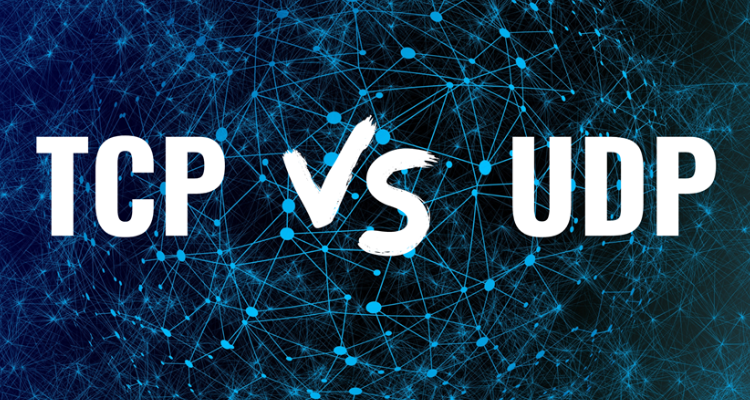Which Protocol Is Better for Streaming – TCP vs. UDP

Streaming a show seems a relatively easy task. You switch on your device, log in to the site, and put on your favourite show. It becomes a little harder when we are unblocking a geo-restricted platform like Hulu or HBO Max while sitting in a country let’s say New Zealand where these are not available.
The common thought process would be employing the best VPN in New Zealand to do the unblocking which is absolutely correct, but what if we dive a little deeper and know actually how to get the best quality video for streaming out these best VPNs.
It all comes down to the form of data, how it travels, the protocols used, and the VPNs employed. This is a lot more complex than we think.
It’s essential to take into consideration UDP and TCP in the approach to securing the ideal stream for your viewers. Therefore, let’s examine the argument over which of the following is the appropriate protocol to employ since it is frequently discussed.
Introduction to TCP
A computerized network’s protocol for transmitting data between devices is called Transmission Control Protocol (TCP). It has earned accolades for its expertise in establishing links that provide two-way data transmission, which implies that a portion of the data loss associated with UDP can be avoided. This is one of the main explanations for why TCP is a core pillar of the IP suite, along with UDP and SCTP.
By integrating mechanisms to address many of the problems with UDP, TCP makes it feasible for packets to be transmitted reliably. In addition, it can assist in resolving a number of UDP-related problems, including duplicate, lost, corrupted, and then-out packets.
TCP streaming can give users peace of mind by ensuring that they get streams and can play them back to enhance their customer experience.
Introduction to UDP
A core communication protocol that consumes very little bandwidth and has no congestion is called User Datagram Protocol (UDP). Notwithstanding its lousy reputation, UDP is incredibly efficient at reducing latency and can be a crucial component of your streaming strategy.
This signifies that viewers of various shapes and sizes will be able to enjoy your material without experiencing lagging or other playback problems.
What is, therefore, the objective of the UDP protocol? The protocol speeds up communications by prohibiting an encrypted channel from being set up before data is sent. Data can be exchanged very quickly in this way, which depending on the circumstance, maybe a blessing or a curse.
The Operation of TCP
In a TCP data transaction, the initiating devices first establish a connection using an automated method called a “handshake.” The machine will transfer data packets appropriately after starting this.
Both endpoints need to have a distinct IP address and the same designated intended port for data transport in order to establish this handshake across a legitimate TCP connection.
Perfect Case Studies of TCP in Practice
The following are some typical TCP application situations
SMTP
Sending emails from one system to the next involves the SMTP protocol. To establish a relationship with an SMTP server, it uses TCP. The server accepts the connection request, enabling email transmission.
Examples of email services that make use of TCP include Yahoo, Outlook, and Gmail.
The Operation of UDP
Using IP, UDP operates. It depends on the systems between the transmitting and receiving systems accurately directing data to the source at each step along the way.
Throughout many cases, an application will wait for data delivered via UDP packets and, if it doesn’t hear back within a specific amount of time, will either resend the data or give up.
The data integrity and predictability provided by TCP handshakes are not available with this straightforward transmission mechanism. It’s important to be aware that packets have even been known to vanish suddenly.
Perfect Case Studies of UDP in Practice
Here are some actual instances of UDP in use.
Live Streaming
Since there are no lag troubles while using UDP, it’s an excellent choice for live streaming. You may quickly set up multicasting for secure, uninterrupted viewing when using it for live streaming in conjunction with other protocols like RTCP or RTP.
Which is more effective for broadcasting, TCP or UDP?
Although both protocols offer significant applications in various settings, TCP has become the more popular of the two thanks to its ability to create error-free output and organize data correctly.
As it can digest and recombine packets in the proper sequences, this is one of TCP’s main benefits over UDP. Nevertheless, the output could necessitate a significantly higher overhead and total latency, which is why in some circumstances, using UDP can be advantageous. Although it will be slower, TCP is the preferred method when accuracy is crucial.
In situations where rapid broadcasting is required, UDP can be advantageous. Because it doesn’t require a virtual circuit for data transmission, UDP is regarded as a connectionless protocol. UDP transfers packets with less latency and bandwidth overhead. UDP is helpful for real-time applications such as live streaming, even though some packets may be lost.
Owing to its capacity to stream data almost instantaneously, UDP is, overall, the superior option. Although some data packets might be sent out of order, UDP is the preferable choice in this regard.
This may manifest in the rare viewing hiccup, a frame freeze here and there, or a glitch, but in most instances, these things are not fatal. The user experience won’t likely be significantly impacted if UDP only slightly impairs viewing. Conversely, TCP performs better when essential messages or files need to be sent rapidly.
TCP is, however, commonly recognized as the superior video streaming protocol from a reliability perspective because it enables relevant devices to regularly communicate with one another, look for errors, and correct them.
TCP can help utilize a network’s entire bandwidth and ensure increased reliability if your streaming efforts are not time-sensitive. Netflix uses TCP for this reason. Also, check out why streaming is better than cable TV in UK.
Crux
Streaming ecosystems are significantly impacted by the fundamental protocols UDP and TCP. UDP is essential for real-time applications, despite the fact that TCP is praised for its dependability.
Therefore, we can’t say which one is better than the other; you can identify the nature of your work and choose a protocol that best suits your needs. You can also read the best examples of TCP and UDP in real life.
Got stuck in a game? Don’t worry, Steve is here to solve all your queries and give you some hacks about your favorite game.


